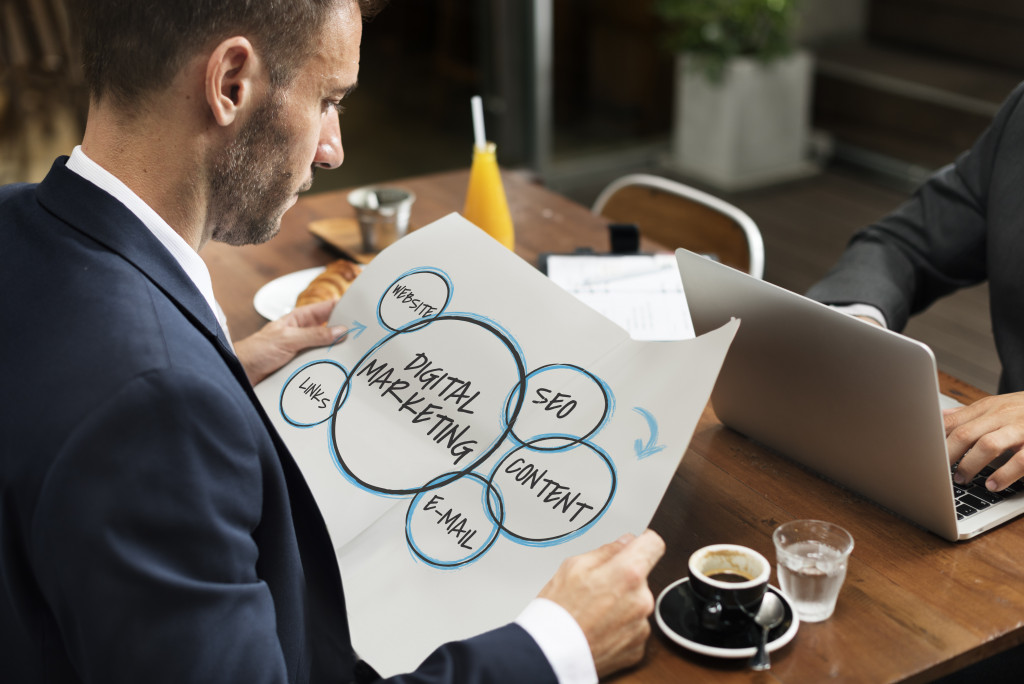The pandemic has put the entire business world online and there is no turning back. The Adobe Digital Economy Index tracked data from more than one trillion visits to U.S. retail websites from March 2020 to February 2021 and found that Americans spent $844 billion in online retail purchases for that period. The study states that e-commerce has been permanently accelerated and it estimates U.S. online retail spending in 2022 to reach $1 trillion.
The shift to digital commerce is not limited to retail consumers, though. Even business-to-business (B2B) selling is now done online. According to data from Statista, B2B e-commerce sales in the U.S. were around 1.089 trillion in 2020 and estimated to reach 1.184 trillion in 2021.
Even as vaccines are being rolled out across the world and brick-and-mortar shops are starting to reopen, digital marketing is still the primary way to catch the attention and clinch the purchasing decision and behavior of consumers, from individuals to other businesses.
Conventional Digital Marketing
The previous methods of digital marketing constitute the solid foundation for new developments in the field. They are still essential, although there are additional features. For instance, every business still needs a website these days because both retail consumers and business purchasers start their search for what they need online. That website, therefore, needs to rank high in online searches, from the usual keyword searches to voice and image searches.
Since mid-June this year, Google started ranking websites based on Core Web Vitals that focus on the user’s experience on both desktops and mobile devices. A website must achieve largest contentful paint (LCP) or load fully within 2.5 seconds. It should have interactivity or first input delay (FID) of not more than 100 milliseconds. It must have visual stability or cumulative layout shift (CLS) of not more than 0.1.
Apart from expecting a website to be fast-loading, interactive, and stable, users also expect it to be attractive, easy to navigate, and to have all the information they need from the business. It is best for businesses to hire a professional web building and maintenance agency that has the expertise to ensure that their website consistently ranks high on all these standards.
That is not all that businesses need to rank high on all manner of searches, though. The tried-and-tested methods of search engine optimization (SEO) and pay-per-click (PPC) marketing are still effective in bringing traffic to the website. A professional SEO and PPC agency can provide both. SEO not only optimizes your website but also provides rich content marketing that is of value to consumers. These link back to the website, providing organic traffic. PPC works alongside SEO with ads targeting specific markets. While SEO and content marketing build-up results long-term, PPC provides immediate returns. For best outcomes, a digital marketing campaign must integrate both strategies.

Developments in Digital Marketing
The rise of social media in recent years, with new platforms constantly appearing, makes it a powerful tool for digital marketing. People of all ages spend much of their online time on these social media channels. Digital marketing teams must learn about the differences among social media platforms, the tone of each channel, and their respective demographics. With such information on hand, the company must decide if it is worth it to invest in a presence on all platforms or to just focus on those where most of their target audiences are.
Consumers expect companies to be instantly responsive on social media. It is crucial to assign experts to work in shifts around the clock so that every query is promptly attended to. This is also vital in handling posted criticisms or complaints. The company must have people knowledgeable in crisis communication handling their social media. It is essential for the company to respond responsibly and gain the trust of the audience.
Consumers respond to interactive posts on social media. Polls, contests, and invitations for users to post their own content using the brand are popular. The latter is particularly useful for raising the credibility of the brand with users acting as brand ambassadors. The other two activities can provide more information about the market.
The use of artificial intelligence (AI) makes a huge difference in digital marketing. Feeding all the information gathered from the users’ behavior on social media, on the website, and on PPC campaigns into AI will enable it to analyze trends and produce insights. These can further improve products and services and refine marketing campaigns. AI can provide each consumer with a personalized experience on the website, highlighting products based on the user’s known preferences. Personalized promotions can adjust the extent of discounts depending on the particular user’s purchasing behavior.
Benefit from Synergy
Businesses will gain the most from a synergy of traditional and cutting-edge digital marketing strategies. The pandemic has taught companies that agility and flexibility are necessary for survival. They are also keys to thriving in the new normal and even after the pandemic.

